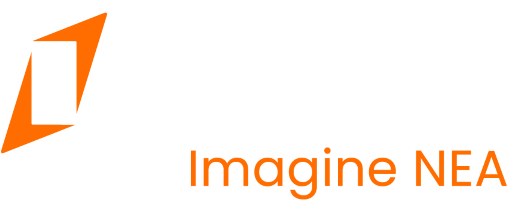Rental property in Jonesboro has its draw. Average rent in mid-2025 is about $1,100, which is almost half the national number. That makes it easier for tenants to live here and easier for investors to buy in. Demand stays steady because the market feels accessible.
But low rent also means thin margins. One roof repair, a vacancy that lingers, or a bump in insurance costs can drain monthly income fast. It doesn’t take much for profit to turn into a problem.
If the goal is steady income and long-term gains, a budget isn’t just paperwork. It’s the guardrail that keeps everything moving forward. Here are some of the strategies you can use to keep your rentals in Jonesboro running smoothly and cash flow steady.
Key Takeaways
- Rent in Jonesboro averages about $1,100, nearly half the national number, but growth has barely moved, under 1% this past year, so a solid budget matters more.
- Put aside 5–10% of rent for repairs. One roof or HVAC bill can erase a month’s income if you don’t plan ahead.
- Don’t skip tax planning. Deductions like mortgage interest, management fees, repairs, and depreciation can keep thousands in your pocket each year.
1. Keep Income Projections Realistic
Cash flow starts with rent. In Jonesboro, one-bedroom units often rent around $905 per month, while the higher end reaches just above $1,100. Growth has also been slow, with less than one percent in the past year.
Moreover, HUD lists the fair market rent for a two-bedroom at $973, which is almost four percent higher than last year.
It is easy to overestimate. A property that rents for $1,000 a month looks like $12,000 a year. Once a vacancy buffer of five percent is added, the figure is closer to $11,400. That difference may not seem big, but it can decide whether cash flow stays positive after expenses.
2. Understand the True Costs
Rent is only half the story. Expenses pile up fast if you underestimate them. Mortgage, taxes, and insurance don’t change, but repairs, maintenance, and utilities can swing month to month.
Pro Tip: Set aside 5–10% of rent for upkeep. That way, you’re not draining personal savings when something breaks.
Don’t forget management fees. Some owners see them as just another cost, but they usually pay for themselves. A good property manager keeps units filled, rent collected, and books accurate. That means fewer mistakes, fewer long vacancies, and more money left in your pocket.
3. Protect Cash Flow with a Reserve
Stuff breaks. The AC quits in July, a storm rips shingles off, or the stove dies right before a holiday. Without a reserve, those bills hit profits hard. You can sign up for our FREE Rental Analysis to have a clearer picture of how much you profit from your rental.
Pro Tip: Hold back 5–10% of rent each month. That cushion turns a money-drain emergency into a routine expense you can handle without stress.
4. Invest in Upgrades That Pay Back
Not all spending bleeds cash. Some upgrades boost rent and attract better tenants. Energy-efficient appliances save tenants money and make your place easier to lease. Fresh paint, new floors, and simple landscaping lift curb appeal and justify higher rent. Smart locks or security systems give your listing an edge.
In Jonesboro’s market, small updates can mean faster rentals, steadier income, and tenants who stick around longer. Use our ROI calculator to see if your investments are worth it.
5. Track Finances with the Right Tools
Cash flow falls apart without good tracking. Paper records and basic spreadsheets leave too much room for error. Reliable reporting means monthly statements, income versus expense tracking, and tax-ready documents.
PMI Imagine NEA offers systems that handle this automatically. You can get a clear picture of performance, spot issues early, and avoid scrambling during tax season.
6. Budget with Taxes in Mind
Taxes can eat into profits if they are not planned for. A budget should account for common deductions:
Mortgage interest
For most landlords, the loan payment is the heaviest bill each month. The interest portion of that payment is deductible, and that deduction helps take the sting out of carrying a mortgage. Over a full year, this can save thousands of dollars in taxable income. If the property is financed for the long haul, that yearly break adds up over time and keeps the numbers working in your favor.
Management fees
A property manager makes life easier by handling the tough stuff, such as rent collection, late-night calls, and repair scheduling. Of course, there’s a fee for that help. The upside is that those fees are deductible. Instead of shrinking your bottom line, they can work in your favor at tax time, turning what feels like a cost into a smart write-off that keeps your workload light and your books balanced.
Repairs
Leaks, broken locks, busted appliances—it all happens, sometimes at the worst times. Repair costs can hit hard in the moment, but the good news is they’re deductible in the same year you pay for them. That write-off helps balance things when the budget takes a sudden hit. By claiming repairs as you go, you’re turning what feels like a headache into something that keeps more of your income safe.
Travel for inspections
Every trip to the property costs time and money, whether it’s checking a repair, meeting a contractor, or just making sure the place is in good shape. What many owners forget is that those miles, gas, and even parking fees can be deducted. One drive might not seem like much, but after a year’s worth of visits, it adds up. Tracking it closely makes those small costs worth something when tax season comes around.
Depreciation
Unlike repairs, depreciation isn’t about spending cash. It’s about spreading out the value of your rental property over its useful life. Each year, you deduct a portion of the property’s cost, even though you’re not paying anything out of pocket. It’s a paper expense that lowers taxable income and helps you keep more cash on hand. For many owners, it’s one of the most powerful tax breaks available.
Recording these throughout the year instead of at the last minute makes tax season easier and helps keep more money in the owner’s pocket.
7. Scale Without Losing Control
Owning more than one property can stretch an owner thin. A per-unit budget shows which rentals are carrying their weight and which need attention. Grouping services like lawn care or pest control also brings savings. With a property manager handling multiple units, growth does not have to mean disorganization.
Build a Budget for Your Jonesboro Rentals That Works Year-Round
Budgeting is not just a task for tax season. It is the plan that keeps income steady, protects against risks, and supports growth over time. Jonesboro’s rental market is steady, affordable, and full of opportunity, but success depends on treating budgeting as part of the job.
PMI Imagine NEA helps landlords in Jonesboro put the right structure in place with clear reporting and financial strategies that protect cash flow.
Don’t wait until expenses pile up! Visit our accounting services page now to schedule a free consultation and lock in a budget that works for 2025 and beyond.
FAQs
How much do property management fees typically run in Arkansas?
In Arkansas, property managers usually take 8–12% of the monthly rent as their fee. So, if your unit brings in $1,000 a month, expect to pay around $80–$120. That fee often covers screening tenants, collecting rent, handling repairs, and managing emergencies. It might feel like a chunk out of your income. But if you’d rather skip late-night calls, tenant issues, and paperwork, that fee can buy you peace and time.
What are the current property tax rates in Jonesboro?
Jonesboro’s property taxes are pretty low compared to national averages. The current rate is 0.55% of assessed value, which means about $5.50 per $1,000. So, for a property assessed at $100,000, you’re looking at around $550 per year. It’s not a massive bill, but it’s real, and it slips your mind if you don’t budget for it. Treat it like insurance or utilities in your numbers.
What percentage of rent should landlords set aside for maintenance?
Think of maintenance savings as your rental’s “rainy-day fund.” A good rule of thumb is to stash about 1% of the property’s value each year, maybe more for older buildings with aging systems. That money can take the edge off when things inevitably break—like roof leaks or water heater failures. The idea is simple: expect the wear and tear, so you aren’t caught off guard when a repair hits.



